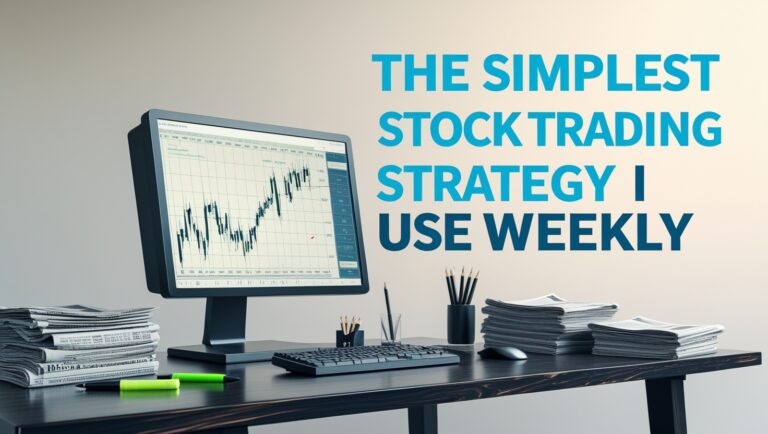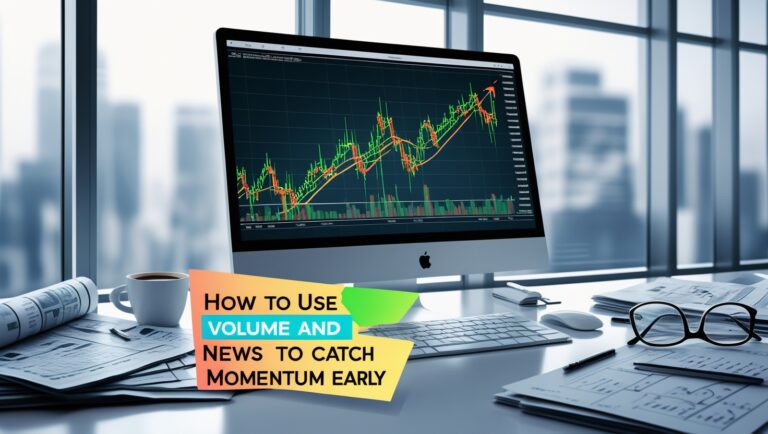How to Track Stocks and Know When to Buy
How to Track Stocks and Know When to Buy
Learn how to track stocks and know the best time to buy with beginner-friendly tips. I share my personal strategies, tools, and methods to confidently grow wealth in the stock market.
- My Ebook: Pay Bills With Stocks
- Robinhood Affiliate Link
- Webull Affiliate Link
- TradingView Chart Analysis

Table of Contents
Tracking stocks and knowing when to buy can feel intimidating at first. I remember staring at charts, confused by numbers and price movements, unsure of when to invest. Over time, I learned strategies that make it much easier to track stocks, understand trends, and make informed buying decisions.
Whether you’re a beginner investor or looking to refine your skills, these tips will help you track stocks effectively, time your buys, and grow your wealth. And if you want a complete guide, I also share my system in my ebook about paying bills with stocks: Grab it here.
Why Tracking Stocks is Important
Many beginners think investing is just buying a stock and hoping it goes up. I made this mistake early on, and it cost me money.
Tracking stocks properly allows you to:
- Understand performance: Know which stocks are growing or declining.
- Identify buying opportunities: Spot when a stock is undervalued.
- Reduce risk: Avoid emotional decisions.
- Optimize your portfolio: Make adjustments based on data.
I personally track my stocks weekly, which gives me insights without obsessing over every fluctuation.
- My Ebook: Pay Bills With Stocks
- Robinhood Affiliate Link
- Webull Affiliate Link
- TradingView Chart Analysis
Step 1: Build a Watchlist
Before buying, I always create a watchlist of potential investments. This lets me monitor trends over time and prepare to buy when the stock is at the right price.
Here’s my approach:
- Select 5–10 stocks you’re interested in.
- Diversify across sectors like tech, healthcare, energy, and consumer goods.
- Use beginner-friendly broker apps like Robinhood (join here) or Webull (start here) to track prices, news, and performance.
- Monitor historical trends, dividends, and volatility.
A watchlist helps me focus and prevents impulsive buying based on hype.
Step 2: Understand Stock Charts
Charts are essential for tracking stocks. I was intimidated at first by candlesticks and trend lines, but learning the basics transformed my investing approach.
Key chart elements I monitor:
- Trends: Identifying upward, downward, or sideways movements.
- Support and Resistance: Prices where stocks tend to bounce or drop.
- Volume: High trading volume can signal strong momentum.
- Moving Averages: Track short-term and long-term trends.
I personally use TradingView (sign up here) for chart analysis because it’s both powerful and beginner-friendly.
Step 3: Track Key Metrics
Numbers are crucial in investing. I always review a stock’s fundamentals before buying.
Important metrics include:
- P/E Ratio (Price-to-Earnings): Helps evaluate valuation.
- Dividend Yield: For income-generating stocks.
- Earnings Reports: Shows growth potential.
- Market Cap: Indicates company size and stability.
Tracking these metrics over time helps me spot undervalued stocks and avoid overhyped options.
- My Ebook: Pay Bills With Stocks
- Robinhood Affiliate Link
- Webull Affiliate Link
- TradingView Chart Analysis
Step 4: Use Alerts and Notifications
I don’t check stocks constantly. Instead, I set alerts for key events:
- Price dips or gains
- Dividend announcements
- Earnings reports
Apps like Robinhood and Webull allow custom alerts. This strategy lets me act quickly without stress.
Step 5: Knowing When to Buy
Buying at the right time is critical. I follow a few simple rules:
- Buy on dips, not peaks: I target quality stocks that temporarily drop in price.
- Follow trends: I buy gradually as a stock shows consistent growth.
- Use indicators: Moving averages and RSI help identify entry points.
- Stick to the plan: Avoid buying based on fear or hype.
Combining fundamentals with charts gives me confidence that I’m buying a strong stock at the right price.
Step 6: Track Your Portfolio
After buying, tracking continues. I check my portfolio weekly to review performance, dividends, and diversification.
I monitor:
- Performance vs. goals
- Dividend payouts
- Diversification across sectors
- Market news affecting my stocks
- My Ebook: Pay Bills With Stocks
- Robinhood Affiliate Link
- Webull Affiliate Link
- TradingView Chart Analysis
My ebook on paying bills with stocks (get it here) offers guidance for tracking income-producing investments.
Step 7: Avoid Emotional Investing
Emotions are dangerous in the stock market. Panic-selling or chasing trends can cause losses.
Tips I follow:
- Set entry and exit points in advance
- Avoid obsessively checking stocks
- Focus on long-term growth, not short-term fluctuations
Tracking stocks systematically lets me make decisions based on data, not feelings.
Step 8: Leverage Tools to Track Stocks
I rely on tools to simplify tracking:
- TradingView: Charts and technical analysis (sign up here)
- Robinhood & Webull: User-friendly platforms (Robinhood, Webull)
- My ebook: Step-by-step guide to tracking stocks and using dividends (get it here)
The right tools make tracking and decision-making much easier.
Step 9: Be Patient and Consistent
Tracking stocks isn’t about instant results. I focus on long-term growth and regular monitoring.
Weekly tracking, analyzing trends, and adjusting when necessary allowed me to grow my portfolio steadily over time.
Step 10: Final Thoughts
Tracking stocks and knowing when to buy is a skill that grows with experience. I started as a complete beginner, making mistakes, but now I can confidently make investment decisions.
Key takeaways:
- Build a watchlist
- Learn to read charts and trends
- Track key metrics and fundamentals
- Set alerts and notifications
- Buy strategically
- Track your portfolio regularly
- Use tools to simplify tracking
- Stay patient and consistent
If you’re ready to level up your stock tracking, check out these resources I personally use:
- My Ebook: Pay Bills With Stocks
- Robinhood Affiliate Link
- Webull Affiliate Link
- TradingView Chart Analysis
Start tracking your stocks today, and gain the confidence to invest like a pro—just like I did.

Stay ahead in the stock market! Subscribe to our newsletter and receive exclusive stock flow reports, trading insights, and actionable tips directly in your inbox. Join thousands of traders who get our updates first.







